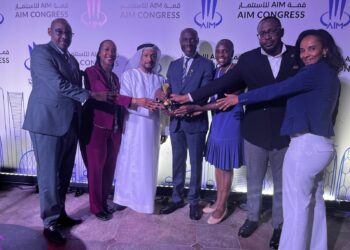About ninety percent of Kampala residents are satisfied with KCCA’S improved roads, signalized junctions, street lights and walkways. This was revealed in an independent survey released in a workshop officiated by the World Bank, on December 13th, 2017.
Results from the two studies further show that KCCA’s Infrastructure project is on track towards achieving set project objectives. The studies were carried out ahead of the mid-term evaluation of KCCA’s Second Kampala Institutional and Infrastructure Development Project (KIIDP 2) funded by the World Bank. The findings of the Technical Assessment and Customer Satisfaction Survey will be used to inform KCCA’s future operations.
Barbry Keller, a Senior Operations Officer at the World Bank said in her opening remarks that, “I bring a positive message from the World Bank. The management sees the project as one that is progressing and largely achieving its objective.” This message was reinforced by Martin Onyach-Olaa, a Task Team Leader, at the World Bank office in Kampala saying, “KIIDP2 has made remarkable progress, but needs to step up its implementation of the remaining half of the project.” He urged the team to draw lessons from what worked best, and do things differently for better project results.
One of the key findings in the Technical Assessment Study notes that physical progress in road construction currently stands at 77 percent in five project sites, while only 44 percent of the funds were utilized. (Fairway, Bwaise, Bukoto, Makerere-Nankulabye, Bakuli-Kasubi).
The study further identifies some of the reasons for low fund utilization, which include delayed acquisition of land along plan road construction sites. The study recommends early resolution of land acquisition ahead of road construction. It also encourages the engagement of utility service providers during the project planning phase in order to gain a clear understanding of the extent of utility interferences; cost and duration for relocations. Other recommendations concerned efficient budgeting for projects, expedited procurement processes, and improved engagement of communities.
A sample of 1,000 residents from all-walks-of-life were interviewed in Kawempe, Makindye, Nakawa, Lubaga and Central Divisions of Kampala by independent research firms. The majority of residents interviewed said there is an improved flow of traffic and less traffic jam because of newly constructed signalized junctions. Some residents cited reduced accidents at signalized road junctions.
A resident of Katale Zone in Bwaise, Kawempe Division said, “Previously Bwaise was known for traffic jam. But now, the traffic lights have helped to reduce the traffic jam.”
Meanwhile a number of residents said their security had improved due to better street lighting and they felt secure. Stating that this has promoted prolong hours of transacting businesses in the night without fear. Respondents also talked about the beautification of their surroundings and image of the city stemming from newly constructed roads. They made reference to areas around Bwaise Junction and Kiira-Kabira junction in Bukoto, Makerere Hill Road, as well as Fairway Junction.
The Second Kampala Institutional and Infrastructure Development Project aims to widen and upgrade infrastructure for improved mobility within the city, in addition to supporting KCCA to better deliver services to residents of Kampala using streamlined, cost efficient and user-friendly mechanisms.
Do you have a story in your community or an opinion to share with us: Email us at editorial@watchdoguganda.com











